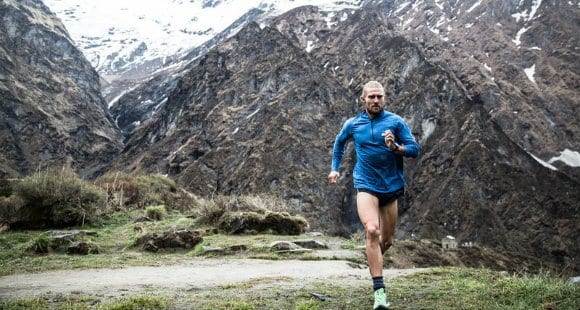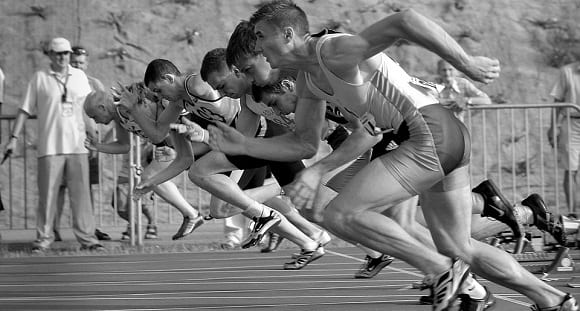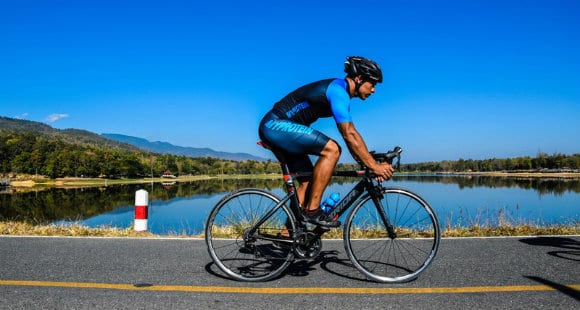By the healthiergang writer , graduated in Food Science and Technology, majoring in Nutrition and Functional Food.
Paratormone PTH
THEparathyroid hormone o parathyroid hormone (PTH parathyroid hormone) is a polypeptide made up of 84 amino acids, synthesized and secreted by the parathyroid glands. PTH can be considered the hormone at the base of the regulation of calcium metabolism, involved in both processes of bone catabolism and anabolism.
Several reports in the literature have described how the action of this hormone can be influenced by physical activity, in this article we will therefore try to describe in a general way the importance of calcium homeostasis and its regulation in athletes or individuals who simply practice physical activity on a daily basis.
Le variations in PTH in relation to physical activity they seem to be influenced by both its duration and intensity, with a probable “stimulus threshold” linked to alterations of this hormone.

Obviously the PTH regulation is influenced by the state of initial bone mineralization subject, age, gender, training status and interaction with other hormones or metabolic factors such as vitamin D, calcitonin, plasma concentration of calcium, phosphate, magnesium, catecholamines, lactic acid, pH, etc.
Before addressing the aspects related to sport, we describe in a general way the action of this hormone.
When the concentration of calcium in the blood undergoes a decrease (hypocalcemia), even a small one, the cells of the parathyroid gland increase the impulses to release this hormone.
Once in circulation, the PTH will act directly by increasing the action and number of osteoblasts (mobilization of bone calcium) and osteoclasts, in the kidney always directly by increasing the reabsorption of calcium by inhibiting that of phosphate and indirectly by stimulating the formation of calcidiol and calcitriol (active form of vitamin D3) in the kidney. intestinal absorption of calcium resulting from the diet.
PTH E Sport
Several studies have now confirmed how important physical activity is for good bone health, as a preventive factor of osteoporosis and reductions in bone mineral density (BMD) in adulthood and as a factor capable of increasing peak bone mass in adolescence (Bradney et al., 1998).
In fact the anabolic effects of physical exercise are not only expressed in competitive athletes whose goal may be mainly to increase strength and muscle mass but comparing sedentary subjects with subjects practicing simple daily physical activity it has been reported that BMD, especially in elderly subjects, was significantly better than sedentary subjects or for some reason immobilized ( Marcus, 1996).
It is also reported as physical activity as a preventive tool towards theOsteoporosis, is particularly indicated in the adolescent period, in fact the bone mineral density (BMD) reaches 90% of its maximum peak at the end of the second decade and about a quarter of the adult bone mass is "accumulated" in the period that "surrounds" peak bone mass (Baily, 1997).
For example, a 2006 study (Maimoun et al.) Reported how sedentary individuals subjected to cycling training of 50 minutes a day reported increases in serum levels of bone alkaline phosphatase (B-ALP) and osteocalcin, markers of new bone synthesis. , suggesting an immediate "anabolic" effect exerted by physical exercise.

The parathyroid hormone PTH is considered the main one regulator of bone metabolism, in particular by maintaining physiological concentrations of calcium and phosphate in extracellular fluids, it is also one of the primary determinants of intracellular calcium levels.
Its target organs are the kidneys, in which it increases the reabsorption of calcium in the proximal tubule, the excretion of phosphate and the formation of calcitonin (active form of vitamin D3) and the skeleton in which it stimulates mineralization (osteoblastic action) and bone resorption. (osteoclastic action), finally contributes to the homeostasis of calcium also indirectly at the level of intestinal absorption by increasing the level of active vitamin D3, an essential factor for the "active" absorption of this mineral.
As mentioned, in bone PTH has a considerably "biphasic" effect, catabolic when exposure is continuous (hypercalcemia) and anabolic when exposure is the result of secretory pulses (normal calcium levels) (Qin et al., 2004).
There are several studies that have reported how different types of physical exercise (in particular combinations of high intensity, volume and high% VO2max in different types of physical exercise) have increased PTH concentrations: exercise until failure, 85%, 70% of VO2max or via HIIT (Bouassida et al., 2003).
In reverse exercise of minimal intensity or in any case of very short duration have reported almost inconsistent changes in PTH concentrations (Brahm et. al., 1997).

As for the anabolic effects of PTH on bone, the mechanisms underlying the regulatory action of this hormone seem to be contained in 3 main steps, stimulation of the proliferation of PRE-osteoblasts, subsequent promotion of differentiation in mature osteoblasts and inhibition of their apoptosis (Qin et. al., 2004).
In a 2004-week study (Miki et al., 48), researchers highlighted how intermittent weekly injections of hPTH were able to increase bone volume trabecular and improve its microstructure in subjects with primary osteoporosis.
In reverse the catabolic action it is associated with continuous release of PTH for example in cases of renal dysfunction or hyperparathyroidism and subsequent bone degradation but also in case of hypercalcemia, this due to rather complex molecular mechanisms capable of involving receptor mechanisms (ODF-RANKL) and subsequent stimulation of osteoclastogenesis and subsequent action (Locklin et al., 2003).
Let's focus now on physical activity. As previously mentioned, there are several data reported in the literature that testify correlations on PTH concentrations and therefore its action and the level of physical activity in particular linked to its intensity and duration.
An example is the aforementioned study, in which Maimoun et al, (2006) reported how cyclists undergoing 50 minutes of training respectively at 15% above the aerobic threshold or at 15% below (VT ventilation treshold), they noted that only in the first case there was a net increase in PTH at the end and in the post-training recovery period. The same researchers also demonstrated in a previous study (2005) how maximal incremental exercise was able to stimulate an anabolic response in bone tissue.
Another experiment in which a continuous running training protocol was compared divided into two phases: 21 minutes at 75% and 21 minutes at 85% VO2max, and a second consisting of running at intermittent levels or 40 minutes of recovery between the two. phases.

The results showed that both produced increases in PTH in the individuals under examination but as in the continuous protocol the concentrations were higher and accompanied by decreases of calcium in ionized form.
Another study (Brahm et al.) Confirmed the fact that exercise intensity plays a very important role in the release of PTH, the researchers evaluated 20 subjects undergoing physical exercise at an incremental level of intensity starting from 30% VO2max passing to 47%, to 76% and then performing 5-6 minutes until failure.
The concentrations of PTH were shown to increase in proportion to the level of intensity and in the subjects who resisted the most at the maximum intensity, the PTH levels remained high even in the following 24h as well as the levels of serum calcium.
Several researchers have suggested that these levels of PTH are also elevated in the 24 hours following intense physical activity may be synonymous with an anabolic effect of this hormone on the bone in response to physical exercise (Salvesen et al., 1994).
Other Variables
As we said there are other factors that can affect PTH release and calcium metabolism, even during physical activity: catecholamines, acidosis, etc. For example, a study conducted on mice showed how acidosis due to the production of lactic acid caused increases in the level of PTH, although not in hypocalcemic conditions (Bichara et al., 1990).
We can say by adding up what has been said so far as changes in PTH in response to exercise are dependent on the intensity and duration of the same, high intensity and long duration or medium intensity but in performance endurance or ultra-endurance (> 5h).
A rather recent study (Moghdasi and Siavashpour, 2013) showed how a 12 week training program in the weight room it produced increases in the levels of PTH, testosterone, estrogen and GH compared to the control group who did not perform physical activity, suggesting that training aimed at strength-hypertrophy somehow stimulated an anabolic response also at the bone level.
These considerations were already reported by Layne and Nelson (1999) in a review in which they stated that there were already several studies to testify that high-intensity exercise in the weight room was one of the best preventive approaches to maintain bone health, particularly in adults.
Conclusions
In conclusion, it is clear how the hormonal and biochemical pathways in our organism are made up of interaction networks between molecules and factors and therefore very different variables, and therefore it is often difficult to make definitive statements applicable to each individual.
In this case, the evidence that shows how physical exercise can have different effects on regulatory mechanisms related to bone metabolism are manifold.


























